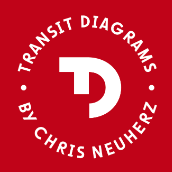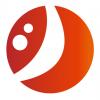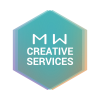-
Posts
52 -
Joined
-
Last visited
Reputation Activity
-
 lastfuture got a reaction from Nicram in Handling multi-page TIFF files (TIFFs with sub-files)
lastfuture got a reaction from Nicram in Handling multi-page TIFF files (TIFFs with sub-files)
Hi there,
from time to time I encounter TIFF files that contain multiple "pages". E.g. our HP scan software produces multi-page TIFF files when scanning multiple pages, instead of saving each page into a separate file. Reading about this online this seems to be known either as "multipage TIFF" or "TIFF sub-files".
Apple Preview handles those files as expected similar to multi-page PDFs displaying all images in the sidebar. To open the multiple pages in Affinity Designer or Photo, the only way right now seems to re-save the TIFF into single files using Preview, via drag-and-drop out of the sidebar into Finder. I'd love if opening those files was handled in a way similar to multi-page PDFs instead. Right now Affinity Designer and Photo both only open the first page, never even acknowledging that there is more.
Attached is such a TIFF containing two pages, right out of the afforementioned HP scan software.
Kind regards
-- Alina
Scannen0001.tif
-
 lastfuture got a reaction from Petar Petrenko in Handling multi-page TIFF files (TIFFs with sub-files)
lastfuture got a reaction from Petar Petrenko in Handling multi-page TIFF files (TIFFs with sub-files)
Hi there,
from time to time I encounter TIFF files that contain multiple "pages". E.g. our HP scan software produces multi-page TIFF files when scanning multiple pages, instead of saving each page into a separate file. Reading about this online this seems to be known either as "multipage TIFF" or "TIFF sub-files".
Apple Preview handles those files as expected similar to multi-page PDFs displaying all images in the sidebar. To open the multiple pages in Affinity Designer or Photo, the only way right now seems to re-save the TIFF into single files using Preview, via drag-and-drop out of the sidebar into Finder. I'd love if opening those files was handled in a way similar to multi-page PDFs instead. Right now Affinity Designer and Photo both only open the first page, never even acknowledging that there is more.
Attached is such a TIFF containing two pages, right out of the afforementioned HP scan software.
Kind regards
-- Alina
Scannen0001.tif
-
 lastfuture got a reaction from transitdiagrams in Handling multi-page TIFF files (TIFFs with sub-files)
lastfuture got a reaction from transitdiagrams in Handling multi-page TIFF files (TIFFs with sub-files)
Hi there,
from time to time I encounter TIFF files that contain multiple "pages". E.g. our HP scan software produces multi-page TIFF files when scanning multiple pages, instead of saving each page into a separate file. Reading about this online this seems to be known either as "multipage TIFF" or "TIFF sub-files".
Apple Preview handles those files as expected similar to multi-page PDFs displaying all images in the sidebar. To open the multiple pages in Affinity Designer or Photo, the only way right now seems to re-save the TIFF into single files using Preview, via drag-and-drop out of the sidebar into Finder. I'd love if opening those files was handled in a way similar to multi-page PDFs instead. Right now Affinity Designer and Photo both only open the first page, never even acknowledging that there is more.
Attached is such a TIFF containing two pages, right out of the afforementioned HP scan software.
Kind regards
-- Alina
Scannen0001.tif
-
 lastfuture got a reaction from Patrick Connor in Export to .BMP
lastfuture got a reaction from Patrick Connor in Export to .BMP
For me it's embedded systems with microcontrollers that can load and display BMPs from storage like SD cards easily without a library because almost no conversion has to be done. Example:
https://gamebuino.com/academy/standalone/add-images-to-your-games
-
 lastfuture reacted to walt.farrell in Using Publisher only as a combined Designer/Photo app
lastfuture reacted to walt.farrell in Using Publisher only as a combined Designer/Photo app
Yes, and using plugins. But those may come soon.
-
 lastfuture reacted to carl123 in Using Publisher only as a combined Designer/Photo app
lastfuture reacted to carl123 in Using Publisher only as a combined Designer/Photo app
Not far at all. It should have what you need to justify working in Publisher
I plan on starting my next website design project in Publisher, working mainly in its Photo & Designer personas but utilising such things as Master Pages, Spell Checker & Tables etc found only in Publisher. I'm looking forward to seeing how that workflow works for me.
-
 lastfuture got a reaction from Adriano de Regino in Export to .BMP
lastfuture got a reaction from Adriano de Regino in Export to .BMP
The Gamebuino library requires bitmaps for example, if you don't transcode them into source code yourself, see https://gamebuino.com/fr/academy/tutorials/images
It needs BMP if they're being read from SD card directly by the Arduino which has very limited processing power. That's why it needs as little compression as possible and trades off processing power for it.
Edit: Oh and it's also very recent, in fact the Gamebuino Meta for which this is especially relevant came out in February.
It would be amazing if I could just use continuous BMP export of my game / app assets directly from Affinity Designer without needing to take extra steps of encoding and having to remember to do it every time for every asset I have changed.
-
 lastfuture got a reaction from vovkasolovev in Exporting palettized PNG-8 with alpha
lastfuture got a reaction from vovkasolovev in Exporting palettized PNG-8 with alpha
Hello,
I'm sorely missing the feature to export palettized PNG-8 with alpha from Affinity Designer for web development. I can export PNG-24 with alpha or PNG-8 with binary (on or off) transparency, but not PNG-8 using a palette in which the colors of the palette have alpha values attached. This is a feature that's supported by both the standalone tool ImageAlpha (converts PNG-24 to PNG-8 with alpha) and by Photoshop's Export dialog that you get by right-clicking layers.
I'm using PNG-8 with alpha for image size optimization, especially for spritesheets and graphics that would not quite work as SVG.
At the moment my workflow is: Export PNG-24, open each PNG in ImageAlpha, manually adjust the settings there, save.
I have to repeat this in parts every time I change a graphic, cancelling the benefits continuous export would provide me with.
Please add this feature
Cheers
-- Alina
ImageAlpha is using "pngquant and pngnq-s9 and alpha-channel-aware posterizer."
ImageAlpha: https://pngmini.com
-
 lastfuture got a reaction from Patrick Connor in Export to .BMP
lastfuture got a reaction from Patrick Connor in Export to .BMP
The Gamebuino library requires bitmaps for example, if you don't transcode them into source code yourself, see https://gamebuino.com/fr/academy/tutorials/images
It needs BMP if they're being read from SD card directly by the Arduino which has very limited processing power. That's why it needs as little compression as possible and trades off processing power for it.
Edit: Oh and it's also very recent, in fact the Gamebuino Meta for which this is especially relevant came out in February.
It would be amazing if I could just use continuous BMP export of my game / app assets directly from Affinity Designer without needing to take extra steps of encoding and having to remember to do it every time for every asset I have changed.
-
 lastfuture got a reaction from mwcs in Exporting palettized PNG-8 with alpha
lastfuture got a reaction from mwcs in Exporting palettized PNG-8 with alpha
Hello,
I'm sorely missing the feature to export palettized PNG-8 with alpha from Affinity Designer for web development. I can export PNG-24 with alpha or PNG-8 with binary (on or off) transparency, but not PNG-8 using a palette in which the colors of the palette have alpha values attached. This is a feature that's supported by both the standalone tool ImageAlpha (converts PNG-24 to PNG-8 with alpha) and by Photoshop's Export dialog that you get by right-clicking layers.
I'm using PNG-8 with alpha for image size optimization, especially for spritesheets and graphics that would not quite work as SVG.
At the moment my workflow is: Export PNG-24, open each PNG in ImageAlpha, manually adjust the settings there, save.
I have to repeat this in parts every time I change a graphic, cancelling the benefits continuous export would provide me with.
Please add this feature
Cheers
-- Alina
ImageAlpha is using "pngquant and pngnq-s9 and alpha-channel-aware posterizer."
ImageAlpha: https://pngmini.com
-
 lastfuture got a reaction from anon1 in Pespective in Affinity Designer for Windows video
lastfuture got a reaction from anon1 in Pespective in Affinity Designer for Windows video
If it were a skew and crop the horizontal edge of "IBIZA" and of "THE WHITE ISLE" (added later in the video) should be parallel but to my eye are quite clearly at different angles, which you can see if you place them against horizontal lines
-
 lastfuture got a reaction from AshTeriyaki in Draw persona brush body-mode "ping pong"
lastfuture got a reaction from AshTeriyaki in Draw persona brush body-mode "ping pong"
Hi,
I love how easy creating brushes is and how easy it is to preserve the head and tail of a brush.
I wish though that alongside the stretch and repeat body modes there was also one named "ping pong" that behaved like repeat but flipped every other repeated segment.
So if I had a brush made up from this:
<___/"""">
repeat would create a stroke like this:
<___/""""___/""""___/""""___/"""">
and ping pong would create one something like this:
<__/""""""\_____/""""""\_____/""">
■ = head/tail
■ = regular segment
■ = flipped segment
it would need to keep track of the number of segments displayed so that the head and tail would line up (always displaying an odd number of segments so the first and last ones are the right way around to line up)
I'd love to see this happen in a future version of AD
Cheers
-- Alina
-
 lastfuture reacted to Ben in Flip X and Flip Y cursor - for object bounding boxes
lastfuture reacted to Ben in Flip X and Flip Y cursor - for object bounding boxes
You can already use dragging of the resize edge handle while holding Cmd to resize about centre. This is a fast way to reverse/flip an objects bounding box about it's centre point. Of course, it doesn't presently snap to the original size when flipped, but that is something that could easily be added. It would work with our present dragging model. It would also allow you to chose whether to flip in object space, or you can reset the selection box and flip in page space.
-
 lastfuture reacted to Andy Somerfield in 1 bit Tiff Transparency and Coloring
lastfuture reacted to Andy Somerfield in 1 bit Tiff Transparency and Coloring
We have a solution for this coming in the next beta! :)
AndyS
-
 lastfuture reacted to 000 in Compatibility with Sketch
lastfuture reacted to 000 in Compatibility with Sketch
That's probably because you're not supposed to use Sketch after discovering Affinity … ;-)
-
 lastfuture reacted to MEB in Introduce Yourself
lastfuture reacted to MEB in Introduce Yourself
iKoma,
The first thing i would try is to open the PSD file directly in Affinity Designer. It should be able to keep your layers as they were in Photoshop and you can continue your work from here.
Currently there's no way to turn your linework in to vectors in Affinity Designer. This function (called tracing) was requested several times and should be coming later as a new persona in Affinity. You can however try to use a third party program to trace your linework and import it to Affinity. You probably will have to adjust its scale to match your reference and maybe polish the paths a little but shouldn't be a big problem if you want to go this route.
The best one i know is called Vector Magic, it's a little expensive but it really does a great job. There's other solutions, including some in the App Store, but the results aren't at the same level.
-
 lastfuture got a reaction from Dale in Introduce Yourself
lastfuture got a reaction from Dale in Introduce Yourself
Hi, I'm Alina Marquardt, professional graphic designer and frontend designer / developer from Germany and I've just quit my private Creative Cloud subscription after extensively testing Affinity Designer.
Really great job everyone!









